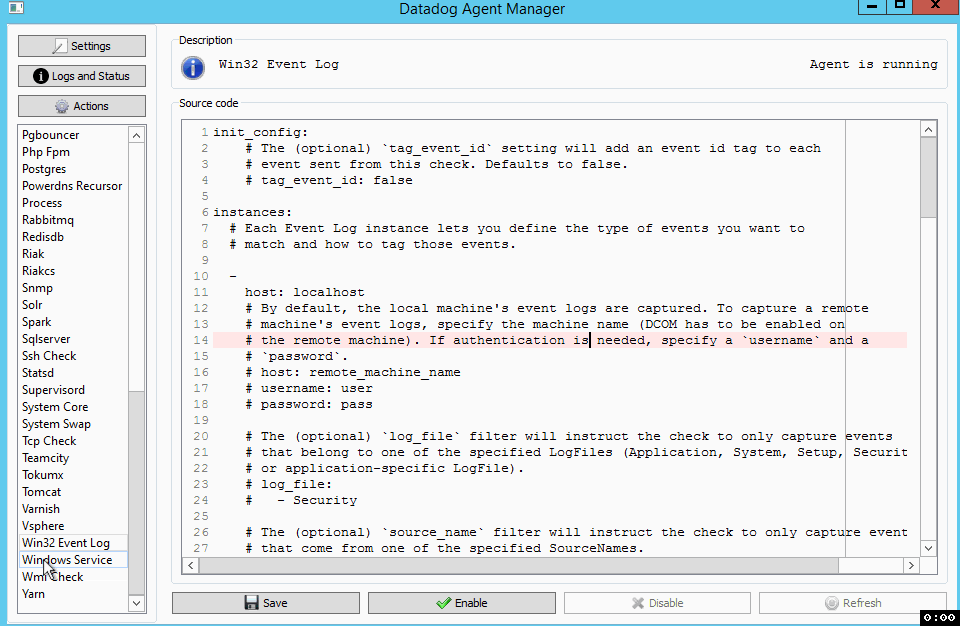Windows Event Id Software Install
Details:While installing NetBackup 7.0 software on a Windows Server 2003 (32/64 bit) or Windows 2008 (32/64 bit) the following error is encountered:Internal Error 2755. 1601,:x64Symantec NetBackup.msiSelecting the option to view the installation logs reports additional detail:,10:04:28: Action 10:04:28: INSTALL.,10:04:28: Action start 10:04:28: INSTALL.,10:04:28: DEBUG: Error 2755: Server returned unexpected error 1601 attempting to install package:x64Symantec NetBackup.msi.,10:04:28: ERROR: Internal Error 2755. 1601,:x64Symantec NetBackup.msi,10:04:53: Action ended 10:04:53: INSTALL. Return value 3.
Image: iStockphoto.com/Highwaystarz-PhotographySoon after my article was published, I received a message from a reader who was interested in tracking USB flash drive usage. More specifically, he wanted to be able to find out when a USB flash drive was connected to a system, when it was disconnected, and ultimately how long the USB flash drive was connected to a system. The ability to track down this type of information could come in handy for a troubleshooting expedition or for conducting a digital forensics investigation.
Windows Security Log Event ID 4697. Operating Systems: Windows 2016 and 10 Windows Server 2019. Services installed as part of native Windows components and therefore you can't determine who actually initiated the installation. This is a key change control event as new services are significant extensions of the software running on a server.
More about Windows.I knew that kind of information would be recorded in Windows 10's Event logs, and after some investigation with Event Viewer, I found out where. Further investigation and experimentation led me to the Event IDs that correspond to the connection and disconnection operations. And of course, each of these operations had a date and time stamp. I then found out how to identify specific USB flash drives, which allowed me to determine how long a specific USB flash drive was connected to a system.In this article I'll explain in more detail what I found. I'll then show you how to employ these techniques to use Event Viewer to track USB flash drive usage on a system. SEE: Getting startedThere are several ways to launch Event Viewer.
One of the easiest ways is to click the Start button and begin typing Event Viewer. When Event Viewer appears in the Results pane, just click it. As soon as the tool launches, you'll see the Overview And Summary panel, as shown in Figure A, which displays a list of the most recent events collected from all the logs.
Figure A The Overview And Summary panel displays a list of the most recent events.Event Viewer will keep track of USB flash drive related events in the Application and Services Logs Microsoft Windows DriverFrameworks-UserMode Operational. However this log is not enabled by default. As such, you need to enable it first by drilling down to DriverFrameworks-UserMode, right-clicking on the Operational Log, and then selecting Properties from the context menu. When the Log Properties - Operational dialog appears, select the Enable Logging check box, as shown in Figure B. Figure B You must enable the Operational Log before Event Viewer will start capturing USB flash drive related events. Tracking a USB flash drive connectionWhen you connect a USB flash drive to your system, a number of Information and Verbose Level event records are generated in the Operational Log. These records will consist of the following Event IDs:.

2003. 2004. 2006. 2010. 2100.
Installation Id Windows
2101. 2105. 2106For example, when I connected a USB flash drive to my system, Event Viewer displayed those event records in the Operational Log, as shown in Figure C.
Figure C When you connect a USB flash drive to your system, a number event records are generated in the Operational Log.As you can see, the first couple of event records pertain to loading drivers for the particular USB flash drive. The rest of the records pertain to the pnp (Plug-and-Play) or Power Management operations that get the drive ready to go to work in Windows 10. You'll also see that each event record has the same Date And Time stamp that corresponds to the instant that the USB flash drive was connected to the system.The majority of these records contain a coded name for the device that will help you identify the device in a generic way. However, each device's unique serial number is also included in the majority of these records, which will allow you to identify specific USB flash drives.As you might have guessed, by combining the date and time stamp with the device's unique serial number, you can find out exactly when a particular device was connected to the system.
Pretty good so far, right?However, connecting the USB flash drive generated 16 event records. Fortunately, all the records are generated at the same time, and the majority of the event records contain the unique serial number. Therefore, you need to investigate only one record to get what you need.When a USB flash drive is connected, the first recorded event record is Event ID 2003. So by noting the date and time stamp assigned to an Event ID 2003 record, you can tell exactly when a USB flash drive was connected to the system. If you then open the Event ID 2003 record, as shown in Figure D, you can find all the information you need.
Install New Software Windows 10

List Of Windows Event Id
Figure D Opening the Event ID 2003 record will provide the necessary information.The General tab of the Event 2003 properties dialog displays all the pertinent information.